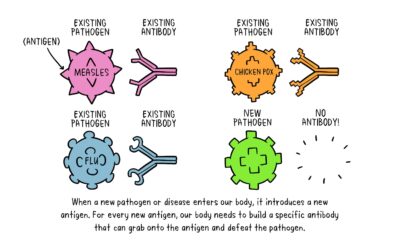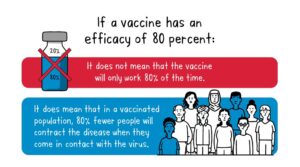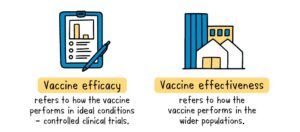What you need to know about Medicare’s Open Enrollment
The information in this blog pertains mostly to those who are aged 65 and up and do not already qualify for Medicare due to a disability. The information provided is meant to serve as a guideline and does not qualify as legal advice. For questions or more information, we recommend you visit the medicare.gov website or speak with a local insurance agent.
It is highly recommended that everyone reviews their Medicare plan annually as your plan often does not reflect changes to your health and medication needs. Additionally, plans also change every year, so there may be a plan out there that better fits your needs.
Which Medicare plan is right for me?
Knowing which Medicare Part D plan is right for you can be difficult. However, there are six key things to consider when reviewing your plan as well as other plan options.
1. Is my medication in the same coverage tier?
Your current plan’s formulary may change, and your medications could then be placed into different tiers. This often changes year to year, so be sure to look at this closely when it is time to review and renew your plan.
2. Do I take the same medication as last year?
Your medication needs often change over time. Whether you have switched to a new medication formula, are taking an additional prescription to treat something new, or no longer need to take a medication that you had been taking last year, reviewing which plans are best based on your current medication needs is crucial. For example, you may have previously selected a specific plan that had a high premium because it placed a needed recurring medication in a low tier; since last enrollment period, you switched to a generic version of that medication that is less expensive across all plans. In this scenario, you may be able to pay a lower premium and still have the coverage you need. ¹
3. Is my pharmacy in the plan’s network?
Insurance companies often instruct plan participants to use certain pharmacies or mail-order services. Before signing up for a plan, talk with your current pharmacy to ensure you will be able to use them or if there is another plan that will work that also allows you to keep your current pharmacy.
4. Am I paying for a high premium that I don’t use?
It’s sometimes worth paying up for a Part D plan that offers better coverage because whatever you spend in premiums, you make up for in copay savings. But if you don’t have any ongoing prescriptions or if your medications are covered on a lower-premium plan, then you may be better off opting for a lower-cost plan. ¹
5. Does my income affect my benefit eligibility?
If you have a lower income, you may qualify for better benefits. Low-income members, including those who have both Medicare and Medicaid, can apply for different benefits. It is important to know all your options. Click here for more information on the “Extra Help” program.
6. Does the Medicare plan have a good record?
A plan’s quality of customer service and attention to detail are measured in star ratings. Good star ratings – especially ratings of four stars and above – can mean a plan has demonstrated quality customer service and has a track record of paying attention to your many healthcare needs (such as periodic screenings or health assessments). Conversely, you should be wary of plans with fewer than four stars. Those plans often have a history of mistreating their members, providing underwhelming customer service, and being slow to process member claims and appeals – delaying or even preventing access to needed health care. ²
When can I enroll in a Medicare plan?
You can enroll in Medicare coverage during designated enrollment periods. The enrollment period varies for different situations. The three main periods to pay attention to are:
- Initial enrollment is a seven-month period that begins three months prior to your 65th birthday, includes the month you turn 65, and extends another three months after your 65th If you sign up for a plan during the three months prior to your 65th birthday, your coverage begins the first day of the month you turn 65. If you sign up during your birthday month or in the three months after your birth month, coverage beings the first day of the month after you ask to join the plan. ³
- Open enrollment occurs annually from October 15 through December 7. During this time, you can join, switch, or drop your plan. Coverage under whichever plan you select begins January 1.
If you didn’t enroll in Medicare when you were first eligible, you cannot use the fall open enrollment period to enroll. Instead, you must use the Medicare general enrollment period, which runs from January 1 to March 31. ⁴
- Medicare General Enrollment and Medicare Advantage open enrollment is from January 1 through March 31 every year. If you enroll during the general enrollment period, your coverage will take effect July 1. ⁴
What can I do during open enrollment?
There are several changes that can be made during the Open Enrollment period: ³
- Change from Original Medicare to a Medicare Advantage Plan.
- Change from a Medicare Advantage Plan back to Original Medicare.
- Switch from one Medicare Advantage Plan to another Medicare Advantage Plan.
- Switch from a Medicare Advantage Plan that doesn’t offer drug coverage to a Medicare Advantage Plan that offers drug coverage.
- Switch from a Medicare Advantage Plan that offers drug coverage to a Medicare Advantage Plan that doesn’t offer drug coverage.
- Join a Medicare drug plan.
- Switch from one Medicare drug plan to another Medicare drug plan.
- Drop your Medicare drug coverage completely.
You cannot, however, make changes to any Medigap plans. These plans are only guaranteed-issue in most states during a beneficiary’s initial enrollment period and during limited special enrollment periods. ⁴
What is Medigap?
Medigap is another name for Medicare Supplement insurance plans that help patients pay for out-of-pocket healthcare costs that may be incurred with Original Medicare Parts A and B. Medigap enrollment is a six-month period beginning the first day of the month you turn 65 years old. You must be enrolled in both Medicare Part A and Part B to be able to purchase a Medigap plan. During that time, you can buy any Medigap policy sold in your state, regardless of your health status. During the six-month Medigap enrollment period, insurers must charge people with preexisting conditions the same price as they charge people in good health. ⁵
If you apply for Medigap coverage outside of your open enrollment period, insurers are allowed to use medical underwriting to deny or charge more for coverage in most states. This means you may pay more or be denied coverage if you have preexisting medical conditions, such as diabetes or heart disease, or if you are facing an upcoming surgery. ⁶
Sources:
¹ https://www.medicareresources.org/medicare-benefits/four-signs-you-need-a-new-medicare-part-d-plan/
² https://www.medicareresources.org/medicare-benefits/seven-rules-for-shopping-medicare-part-d-plans/
³ https://www.medicare.gov/sign-up-change-plans/joining-a-health-or-drug-plan
⁴ https://www.medicareresources.org/medicare-open-enrollment/
⁵ https://www.nerdwallet.com/article/insurance/medicare/what-is-medicare

 About Shima:
About Shima:




